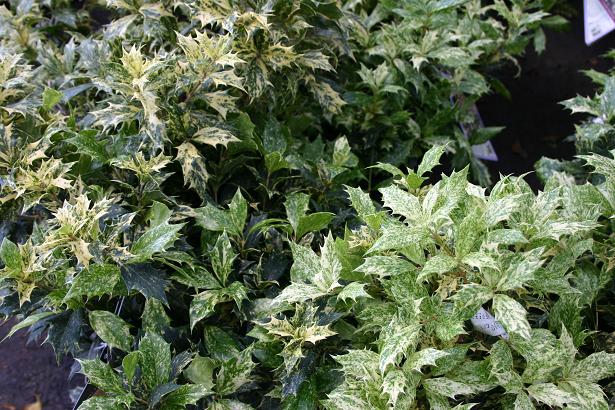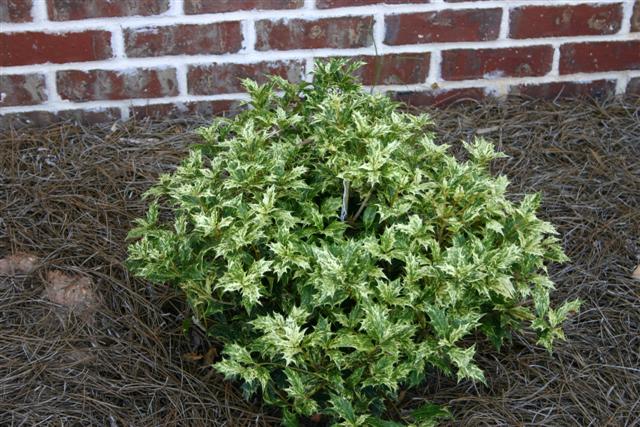Georgia Gardener Newsletter Cool Plant: August 6, 2009
| Goshiki Osmanthus (aka False Holly) |
| Osmanthus heterophyllus 'Goshiki' |
Species Native Range: Asia
Hardiness: USDA Zones (6)7-9
Mature Size: 3-5 feet tall & wide
Exposure: Full sun to partial shade
Soil: Rich, well-drained
Drought Tolerance: Very good
Ease of Culture: Easy
The first time you may happen upon the Goshiki false holly in a nursery, you may find that the nursery personnel have
stashed it in amongst the real hollies. This unusual tea olive bears spiked, stiff, speckled evergreen leaves that look and
feel just like that of a holly. The name "goshiki" is Japanese for five colors as the leaves do possess at least five
different colors at some point in the season: pink, cream, green, gray and white.
Goshiki false holly is a slow-growing shrub that will probably reach 3-5 feet tall. Because it's somewhat new to the
retail trade, no one seems sure as to how large the shrubs will get. Since they grow slower than a holly and can
tolerate pruning, I think you are safe to put them into locations in which a holly would quickly get out of hand.
The variegated foliage is attractive year round and looks outstanding against the solid backdrop of a foundation or fence.
Like other tea olives, Goshiki will produce tiny, white, yet powerfully fragrant flowers in the fall. Plant Goshiki false holly
in full sun to medium shade in well-drained soil. Because this plant does grow more slowly than others, purchase larger
plants for installation.
Use Goshiki false holly in groupings along foundations, as a hedge or as specimens in a mixed shrub border. Good companion plants
include daylilies, salvia, irises, roses, loropetalum, etc.
Sources:
Goshiki false holly is readily available at most retail nurseries.
If you have comments or questions about this article, please
email me.
Copyright © 2009 by Theresa Schrum - All rights reserved
No part of this website may be reproduced without the expressed written permission of Theresa Schrum



